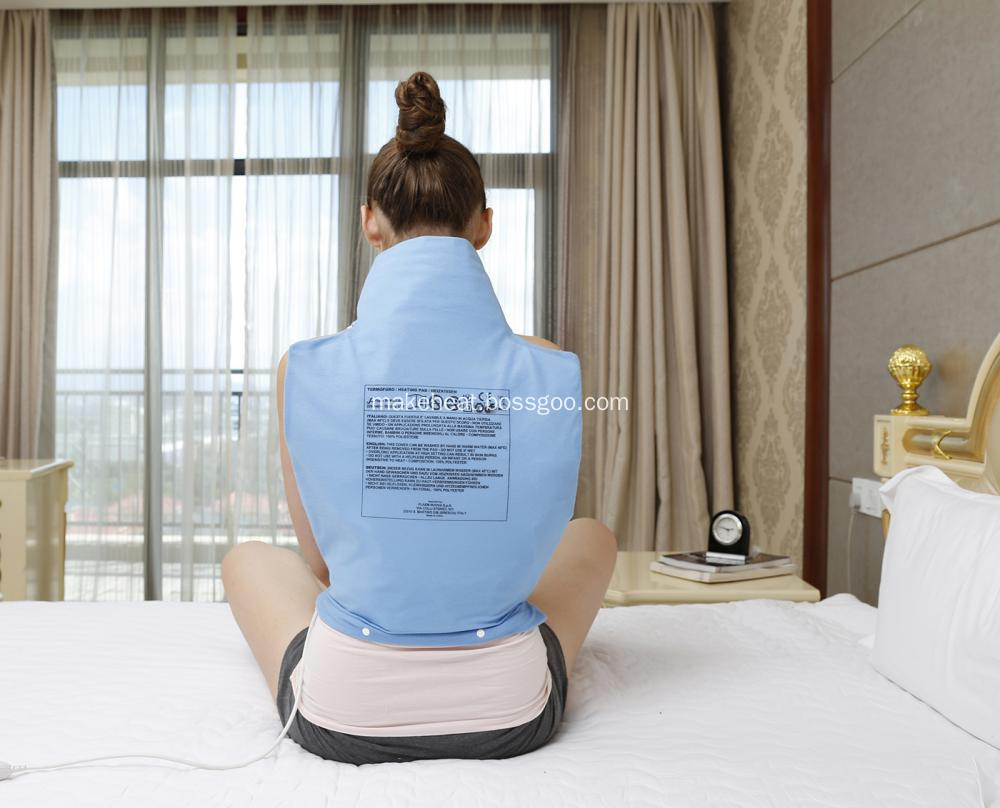Back Heating Pad belongs to Heating Pad. It is a specific kind of heating pad that is used typically for relaxing pains & soreness caused to human backs.
It has 4 temperature settings, as per normal heating pad. The consumers can choose whichever heat settings according to their actual needs. The back heating pad also has the function of automatic shut off, ranging from 90 minutes to 2 hours, depending on consumers' actual needs.
Below image for reference to know the product better.
Back Heating Pad Therapeutic Heating Pad, Electric Heat Pads, Moist Heating Pads, Heating Pad for Back Ningbo Makeheat Electrical Appliance Co., Ltd , http://www.makeheat.net

How to identify fish meal adulteration
Since fishmeal is one of the most commonly used animal protein feed ingredients for the production of feedstuffs, the adulteration of fishmeal has become a thorny problem that we often encounter in feed production. Common types of adulterants include: plant substances (such as rice hull flour, wheat bran, grass powder, rice bran, sawdust, cottonseed meal, and rapeseed meal, etc.) and animal substances (such as hydrolyzed feather meal, enteric powder, blood meal, etc.) Meat and bone meal, etc.), nitrogenous compounds (such as urea, urea-formaldehyde polymers, etc.), sand, stone powder, yellow mud and other impurities. First, the sensory inspection method according to the composition of fish meal components, structure, color, texture, gloss, transparency, granularity and other characteristics of quality evaluation. The standard fish meal is generally a powdery material with uniform and slightly oily particles. A large number of loose fish muscle fibers and a small amount of bone spurs, fish scales, fish eyes and other components can be seen; the colors are uniformly light yellow, yellow brown, or yellow-brown; There is a sense of looseness in the hand, no agglomeration, no clumping; when smelled with a rich smell of grilled fish, and slightly fishy smell, but no odor. Adulterated fish meal can be seen in particles of different sizes, different shapes, different colors of impurities, rare or no fish muscle fiber and bone spurs, fish scales, eyeballs and other fish meal components; powder particles are small, easy to agglomerate, mostly small groups Blocky. Second, the floatation method to take a little sample, into a clean glass or beaker, add 10 times the volume of water, stirring vigorously, after standing to observe the floating surface of the water and sediment on the bottom. If the water floats with feather fragments or vegetal matter, such as rice hull flour, peanut shell flour, wheat bran, etc., it indicates that hydrolyzed feather flour or vegetable substances have been incorporated. Third, the screening method The fishmeal samples were screened with a standard sieve with a pore size of 2.8 mm. At least 98% of the standard fishmeal particles were passed. Otherwise, adulterated fish meal was found to be adulterated. Different meshes can be used to detect different impurities. Fourth, color reaction method to take a sample of 1 g and a little yellow soybean powder into a test tube, add 5 ml of distilled water, shaking placed in 60 °C ~ 70 °C water bath for 3 to 5 minutes, remove 0.1% of cresol red after adding Indicators. If the solution is dark purple, indicating that the sample is doped with urea. Without urea, the solution was yellow or brown-yellow. Fifth, the smoke test method to take a little sample on the flame burning, with litmus paper test smoke. If the test paper is red, the reaction is acidic, indicating that the sample is animal material; if the test paper is blue, the reaction is alkaline, indicating that the sample contains plant material. Sixth, the odor test method can determine the authenticity of fishmeal based on the odor produced when the sample is burned. When burning, if you smell the pure hair, the odor indicates that the sample is an animal material; if there is an aromatic taste when the grain is fried, it means that the fish meal is mixed with vegetable substances. Take 20 grams of sample and place it in a small flask or a conical flask. Add 10 grams of soy flour and a suitable amount of water. Heat for 15 to 20 minutes after stoppering. If the ammonia odor is smelled after removing the plug, the sample contains urea. Seven, ash inspection method Take a sample of 10 grams into the crucible, set the furnace to burn and make it completely ash, fish meal ash content does not exceed 5%. The fish meal mixed with loess and sand has an ash content that is much higher than 5%. Eight, bubble identification method to take a little sample into the beaker, add the appropriate amount of dilute hydrochloric acid, if there are a large number of bubbles generated and issued a buzzing sound, indicating that the sample was mixed with stone powder, shell powder, crab shell powder and other substances.